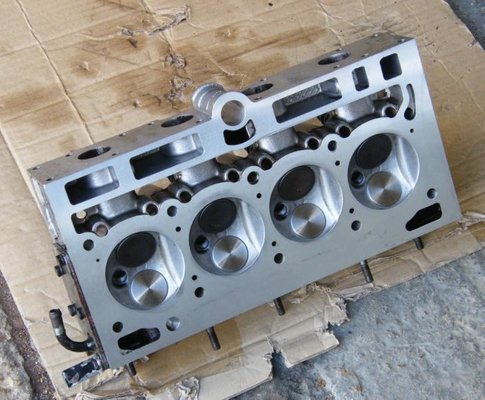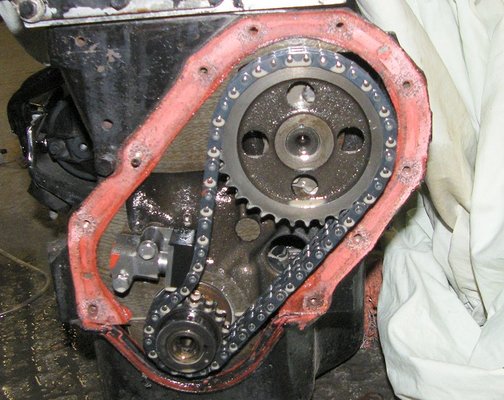I've used my 'patented' method since the early 1980's. It was when I discovered the reasons why British Leyland 2200cc Princess models had tendencies to develop cracks in their cylinder heads.
Before fitting a second cylinder head on a customer's Princess in one year I prodded one of the bolt holes with an electrician's screwdriver and it was full of swarf from the manufacturing process. All other holes were equally as bad. A little light came on and I realised that the reason for the cracks was because the head could not be properly torqued down.
Since then, before I replace a head I do the following:
1) Stuff clean rag in all the orifices of the block except the bolt holes.
2) Thoroughly clean the surface of the block using a Stanley Knife blade, wet and dry paper lubed with WD40 or similar.
3) Stick a small screwdriver in each bolthole to check for swarf and crap.
4) Run the compressor up to 100psi, wrap the end of the airline nozzle with rag and blow out each hole. Keep a grip on the rag to prevent swarf and carbon going everywhere.
5) Repeat if necessary. Then run a tap down each hole to clean burnt carbon particles from the threads. Blow out all the holes again.
6) Remove the rag from the orifices and throughly clean the block surface and bores with thinners so everything is perfectly clean.
7) Fit the gasket without any sealant or grease (light greasing okay on copper asbestos gaskets). Carefully drop on an equally clean cylinder head that has been thoroughly overhauled and checked for straightness.
8) Apply a
very light smear of copper grease to each cylinder head bolt and tighten them down by hand using an extension and socket.
9) Then nip them up using a bar, then tighten them in the correct sequence using half the recommended torque. Then 75% of the recommended torque, then 100%.
10) After 500 miles on a cold engine. Undo each bolt one turn and then torque to the recommended figure.
By using these simple rules I never had any failures at all and I urge any of you who are carrying out any top end work to use these rules. There is nothing worse than a head gasket failure when you're miles from home and you had forgotten to renew your AA subscription










 .
.
 ops:
ops: 